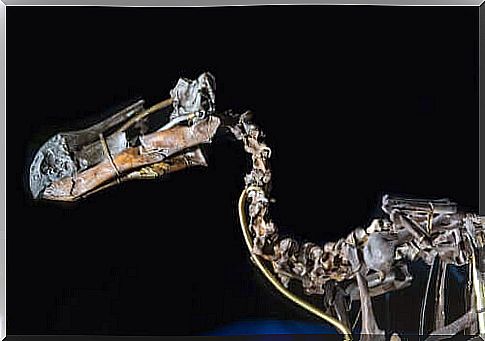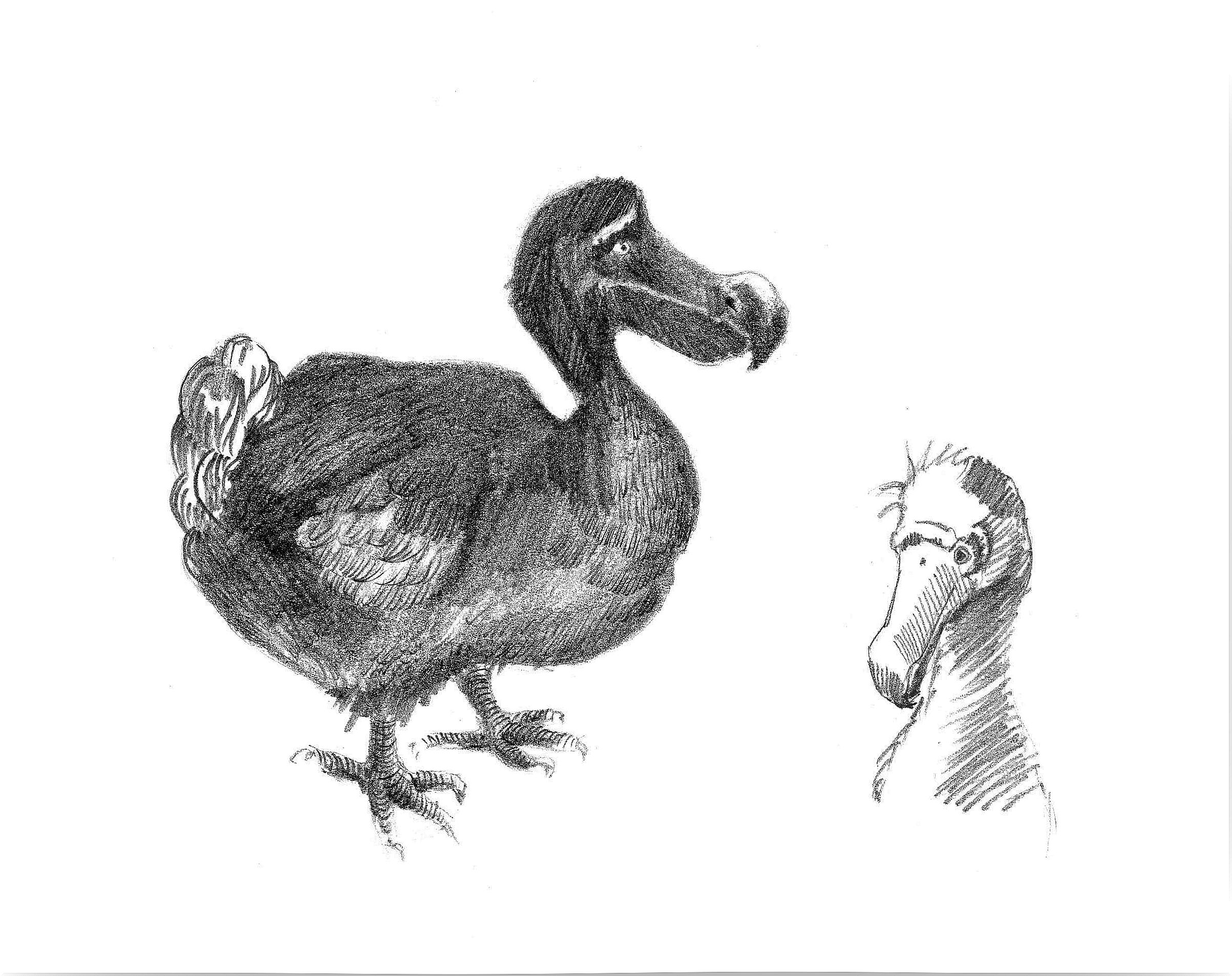The Dodo: The Story Of An Extinct Bird

More has been written about the dodo ( Raphus cucullatus ) than about any other bird in the world. Unfortunately, much of the data we have to date comes from legends and illustrations that, while spectacular, have resulted in errors about what the dodo really was and how it went extinct.
The physical appearance of the dodo
The dodo was a columb-shaped bird – like pigeons – that did not fly, endemic to Mauritius, in the Indian Ocean. Only bone remains, drawings and stories were found about him.
Based on the data collected, the researchers believe that it was a large and heavy bird : they could reach a meter in height and weigh between 13 and 25 kg. His femurs, tibia, and torso were long, so the dodos must have had very muscular legs. On the other hand, the wing bones show that these limbs were very small and therefore they could not fly.
The skeletal remains also show that the dodo had a large beak, about eight inches long. Its shape reveals that it was mainly a granivorous bird – it fed on seeds and large fruits. It is very likely that his favorite food was the seeds of the tambalacoque tree ( Sideroxylon grandiflorum ).
A study published in the Zoological Journal of the Linnean Society showed that dodos had a highly developed olfactory bulb. As a result, we now know that dodos had an extremely developed sense of smell, and this probably served them to find seeds buried deep in the ground, which they dug up with their strong legs.

How and why did the extinction of the dodo occur?
It took humans less than 100 years to do away with the dodo. Since their arrival on the island in the 16th century, humans have hunted this and other birds that had no natural predators. Therefore, they had no means of defending themselves.
It seems that the dodo was a very tame bird, easily captured, and not afraid of the new settlers of the island. That’s why sailors hunted dodos with ease, which led to their extinction.
The last reliable sighting recorded was in 1662. Later, other reports referred to a similar bird confused with the dodo, the Mauritian red woodcock ( Aphanapteryx bonasia ).
Despite this, statistical techniques for predicting the probability of extinction of a species published in the journal Science indicate that it is very likely that the dodo lasted until 1690.

Other birds in the same situation
The dodo is not the only bird incapable of flight that has gone extinct due to human causes. In fact, the list of birds that have disappeared from Earth in periods less than a century since they crossed the path of man is over a hundred.
Below, we’ll show a small series of examples of some of the birds that have gone extinct for the same reasons as the dodo.
- Mauritius Red Falinhola ( Aphanapteryx bonasia )
- Elephant bird ( Aepyornis maximus )
- Giant Moas ( Dinornis robustus )
- Large- beaked mill ( Euryapteryx curtus )
- Common Kiwi ( Apteryx australis )
- Emu ( Dromaius novaehollandiae ater )
- Dromaius Baudinianus
- Arabian Ostrich ( Struthio camelus syriacus )
- Amsterdam island mallard ( Anas marecula )
- Northern Island Goose ( Cnemiornis gracilis )
- Giant Arau ( Pinguinus impennis )
- Northern Island Aptornis ( Aptornis otidiformis )
- Diaphorapteryx hawkinsi
- Aphanochex Podarces
The extinction of a species is not only harmful to each one of them individually. Each species plays a fundamental role in global ecology, however small. The consequences of a large number of extinctions can affect each and every one of the beings that inhabit the planet.









